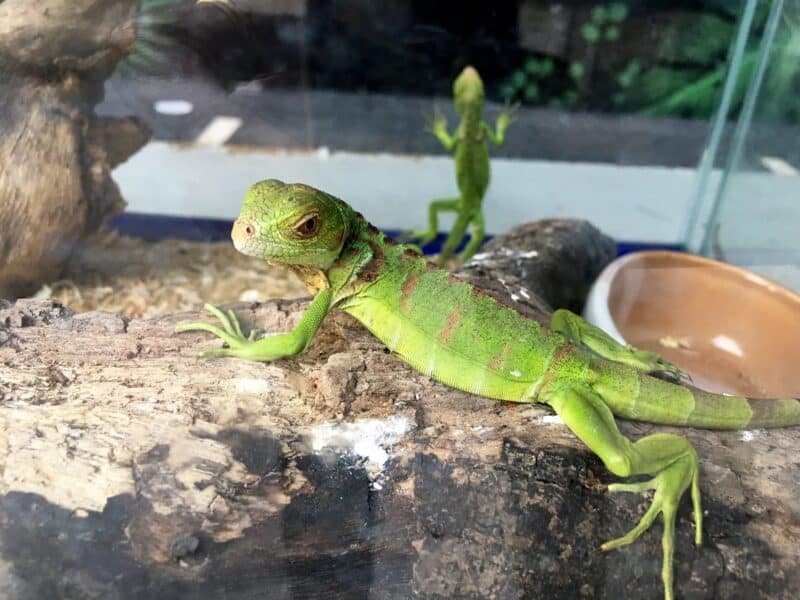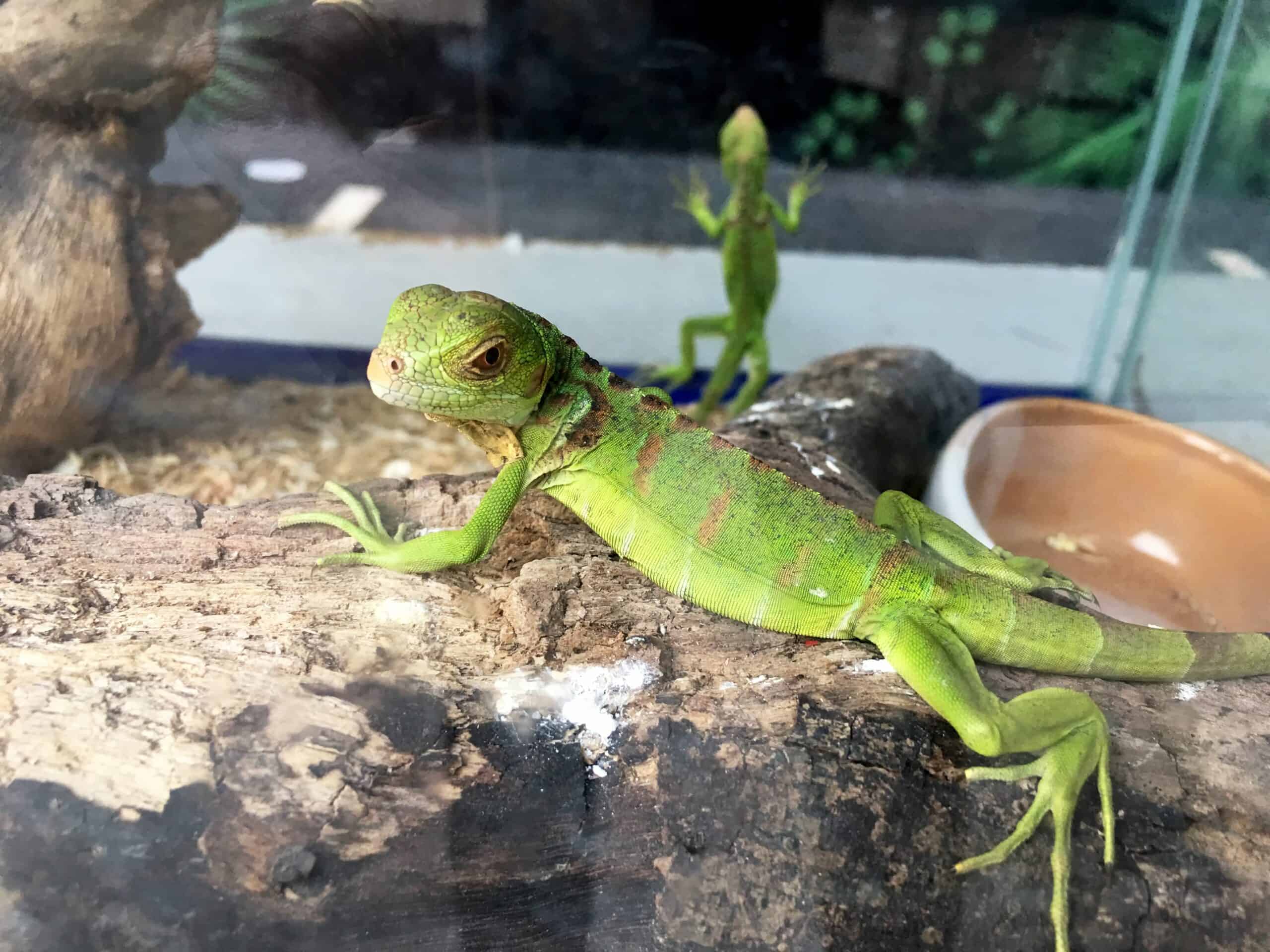Pet ownership is one of the many joys of family life. It provides an opportunity to nurture responsibility and compassion, and the joy a family pet brings is endless. While many families opt for a traditional pet like a cat or dog, others go the reptile route and get a pet lizard. They may not be as cuddly as kitties, but pet lizards are just as fun and in many ways are a good entree into pet ownership as they require a bit less hands-on attention that dogs and cats do.
If your family is considering getting a pet lizard, here are a few things to keep in mind.
RELATED: Your Household Pet Guide

©SergiyN/Shutterstock.com
Pet Lizard Equipment
As with any pet, there's some standard equipment you'll need when you get a lizard. And while you'll likely want to splurge on some additional things to treat your new pet, there are only a few “musts” that you'll need right off the bat. These include:
- Terrarium/tank — Get a tank or terrarium that offers plenty of room for your lizard to roam. For a “regular”-size lizard, that will be about a 20-gallon tank. Smaller lizards can live happily in a 15-gallon tank.
- Hot rock/heat source — Lizards are cold-blooded creatures and need heat sources to stay warm and help regulate their body temperatures. You'll want to create a heat gradient by placing the heat source at one end of the terrarium where they can find warmth, and then they can head to the other end of the tank for cooler temps.
- Lighting — Lizards rely on day/night cycles to ensure they remain healthy and relaxed. Providing a light source will allow you to create “day” and “night” for your lizard. Plus, many reptiles require UV light for their overall health. And finally, lighting may also provide an additional heat source, but if you're using a heat lamp, ensure it's mounted to the top of the tank so your pet lizard can't come into direct contact with it and get burned.
- Humidity source — Install a mini waterfall for your lizard, a humidifier, or simply add a bowl of water to increase the humidity in your pet's habitat.
- Ambiance — Many people like to create a “scene” by adding a backdrop to the outer back-side of the terrarium. Additionally, you can add rocks, branches or plants to your tank, but be sure to consult with your pet store's reptile expert to ensure that the selections you're adding are safe for your pet lizard.
- Food — When it's feeding time, lizards like mealworms, crickets, earthworms, silkworms ants, crickets and grasshoppers. You can also feed your lizard fresh fruits and veggies — lettuce, kale, apple, melon, etc.
- Water — Add a shallow dish of fresh water to the terrarium. This can be for both drinking as well as to help your pet lizard with its shedding cycle.
Types of Pet Lizards
When you're ready to take the plunge and buy your family's new pet lizard, it's nice to know you have options. Here are a few of the more popular types of lizards that people have as pets.
- Green Anole — Green anoles are often said to be the best reptile for first-time lizard owners. While it's not a chameleon, it can change colors, and it requires a delicate touch when handling. Learn more about green anole here.
- Bearded Dragon — Bearded dragons can grow up to 2 feet long, and their “beard” color changes depending on their mood. They enjoy munching on locusts, crickets and cockroaches.
- Iguana — Iguanas are popular options for pet lizards. They can grow up to 7 feet long, and their tails are about half the length of their body. Learn more about this popular lizard here.

©TIPAKORN MAKORNSEN/Shutterstock.com
Buying & Caring For a Pet Lizard
While many big-box pet retailers sell pet lizards and the various reptile items you'll need, you should like start your search at a store that specializes specifically in reptiles. The staff at a specialty pet store is likely more trained in reptile ownership, and the quality of the pets they breed and sell is often much higher than a chain pet store.
BEFORE you bring your pet lizard home, you'll want to do a couple of very important things. First, find a vet who either specializes in or at the very least sees reptile patients. Establish that relationship prior to purchasing your pet so that you can get answers to any care questions before-hand, and if you should have any healthcare needs or emergencies once you have your pet home, you already have that rapport. Second, before you leave the store with your new pet, be sure it's eating. Additionally, give the lizard a good once-over to ensure it has no injuries, cuts or other flaws.
Once home, as with any pet, your lizard needs interaction — but not too much, and not too little. Over-handling your lizard will create stress, but never handling your lizard will also create stress. So look for that perfect balance to ensure your pet lizard is happy and healthy.
Most of all, have fun with your family's new pet. Pet ownership is a most memorable experience and the joys it brings to a family are unmatched!
Find out more about family pet ownership HERE.
The image featured at the top of this post is ©TIPAKORN MAKORNSEN/Shutterstock.com.
